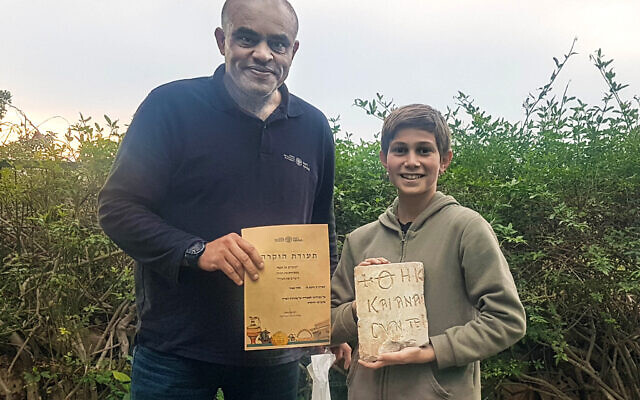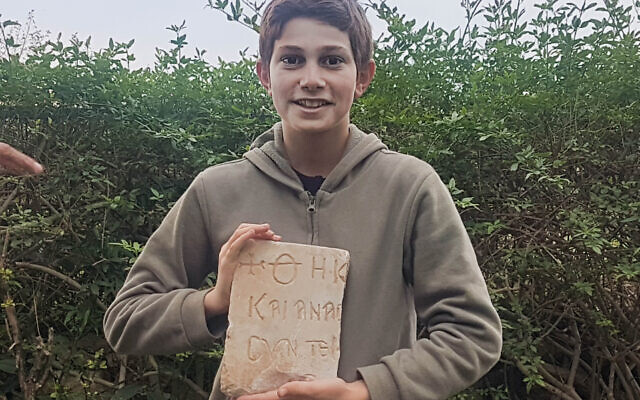Jerusalem
1,500-year-old Greek inscription uncovered by 13-year-old in Caesarea
A week ago, after the rain battered the country in one of the many waves of bad weather that have hit Israel this January, 13-year-old Stav Meir went searching for mushrooms with his father, siblings and cousins. One of the thousands of Israeli youngsters who have participated in an education program offered by the Israel Antiquities Authorities (IAA), Stav ended up uncovering something much more unexpected: a 1,500 Greek inscription dating back to the Byzantine period.

"I immediately recognized that it was something ancient," the seventh-grader from
The white stab protruding from the ground uncovered by the boy turned out to be part of a burial inscription, as Peter Gendelman, a Caesarea researcher at the IAA, explained, pointing out that the inscription indicates the name of the deceased and the location of the grave within the cemetery.
"The grave of .... and of Anastasius, or Anastasia…," the inscription read, according to the IAA.
"Already, in ancient times,

Stav is one of the thousands of Israeli schoolchildren that each year take part in educational programs organized by the IAA.
"We have five IAA educational centers working with schools and children all over the country," Einat Kashi, who is responsible for the center located in
According to IAA archaeologist Dr. Peter Gendelman, the book-sized marble slab is a burial inscription with an X or cross marking the spot of the grave of the wealthy individual interned there. Gendelman gave a preliminary reading of the inscription, which he said identifies the person: “The grave and of Anastasius, or Anastasia …”
The port city of
By the Byzantine era,
According to the IAA’s Gendelman, the tombstone piece is of a high quality that “indicates the wealthy status of the person entombed, as well as the customs and beliefs of inhabitants of
Meir’s father, Zohar Meir, said in an IAA video that Stav and his other children have studied archaeology in their
Stories for you more +